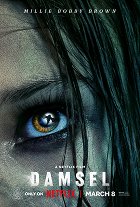Fantasia - Genret
Suosituin suoratoistopalveluissa tänään
The origin of the fantasy genre
Fantasy is a fictional genre defined primarily by setting and props, much like its related genres of science fiction and horror, from which it differs in that it generally does not emphasize the use of scientific speculative technology, nor does it primarily seek to frighten the audience. The fantasy genre is widely found in literature, film and visual arts (and later also in comics and video games), and deals with themes of a magical or supernatural nature, based on ancient myths, legends, fables, fairytales, and other subjects of folk creativity. Stories that fall into the fantasy genre usually take place in a fictional setting of some magical world that is either completely independent of ours or is somehow magically connected to it. They may also take place in our present, but they enrich it with non-existent and supernatural motifs.
Supernatural elements have been present in culture since ancient times. The historical development of fairytales started in antiquity, with various fantastic motifs being used, for example, in the "Epic of Gilgamesh" from the second millennium BC, as well as in various ancient myths. In Anglo-Saxon literature, the most famous is the medieval epic poem "Beowulf", while the collection of fairytales "One Thousand and One Nights" is significant in Arabic literature. Various fantasy elements can be found in literature throughout the ages; William Shakespeare's "A Midsummer Night's Dream", for example, features forest fairies. The founder of modern fantasy is George MacDonald, whose “Phantastes: A Fairie Romance for Men and Women” (1858) is considered the first official fantasy novel for adults. The first half of the 20th century saw the flowering of the fantasy genre thanks, among others, to writers J.R.R. Tolkien (“The Hobbit” and “The Lord of the Rings” trilogy), C.S. Lewis (“The Chronicles of Narnia”) and Robert E. Howard (the “Conan the Barbarian” books), whose works became the pillars of contemporary fantasy and greatly influenced the work of later authors.
Types of fantasy and their characteristics
The fantasy genre is divided into several types that can overlap with each other. The most typical example is "heroic fantasy" (or epic fantasy) that depicts spectacular tales of the struggle between good and evil through stories about characters who experience all sorts of adventures, undertake dangerous quests, search for mysterious artefacts, and encounter supernatural forces or magical creatures. The term "sword and sorcery" is also used for some fantasy stories of this type, whose archetypal hero is a fearless warrior, bravely standing (typically sword in hand) against significant odds. Some of these stories were written with a clear vision of the shape of their fictional world, the past of their heroes and a complex mythology, and often include elaborate relationships between numerous families and historical interludes.
Furthermore, if the resulting fantasy world is influenced by a particular period of human history, such as the Middle Ages, the term "historical fantasy" can also be applied. Depending on the specific setting, one can distinguish, for example, ancient, Viking, or urban fantasy, which is set in a modern city, whether real or fictional. In the case of a purely realistic story, in which supernatural or magical elements play only a peripheral role, we can speak of magical realism. However, not all films containing supernatural elements can be characterized as representative of the fantasy genre, many of them may fall more into the category of horror or science fiction.
The Thief of Bagdad (1924)
Kuva © United Artists
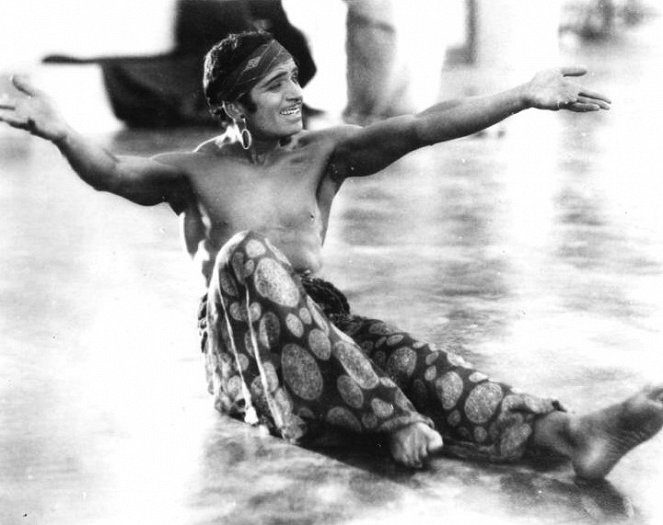
Fantasy elements in early cinema
The first fantasy films were made relatively soon after the invention of cinema by the French director and pioneer of film effects Georges Méliès. As early as 1899, he made the six-minute film Cinderella, an adaptation of the popular fairytale, and in 1902 he made Gulliver's Travels. One of his most famous works is A Trip to the Moon (also from 1902), which became the first sci-fi film in history thanks to its plot about astronauts who visit an alien colony on the Moon, among other incidents. A year later, he made Fairyland: A Kingdom of Fairies, which, in addition to an underwater fairy kingdom, also featured an evil witch. In 1912 he made The Conquest of the Pole (with an ice giant) and another version of Cinderella called Cinderella or The Glass Slipper, but unlike his previous films, these were no longer successful.
The Thief of Baghdad (1924), by American director Raoul Walsh, pushed the level of special effects in film at the time by having its hero float over the rooftops of houses on a flying carpet or fight monsters in the Valley of the Monsters. From the silent era of cinema, the two-part German film by Fritz Lang Die Nibelungen (1924), based on the epic "The Song of the Nibelungs", or the American The Sorrows of Satan by D.W. Griffith (1926), whose main anti-hero was Satan cast down from heaven by angels and forced to live among humans, are also worthy of attention in terms of the fantasy genre. In 1925, The Lost World, based on a novel by Arthur Conan Doyle, told the story of an adventurous expedition into a territory with surviving dinosaurs. The same year also saw the British-German film She, whose heroes searched for an underground mythical city whose finders could become immortal, and the American The Wizard of Oz, which became the model for a more famous version of the same story from the late 1930s.
Niebelungen laulu, 1. sarja: Siegfried (1924)
Kuva © Universum Film (UFA)
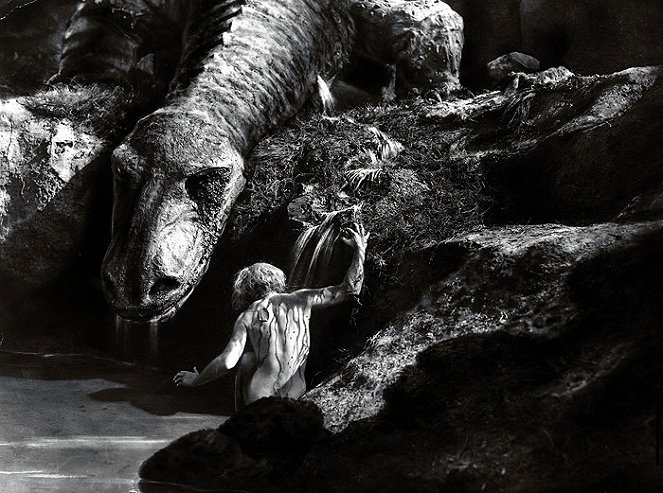
Fantasy after the invention of sound
1933 saw the premiere of King Kong, where a group of filmmakers arrive on a mysterious island to shoot a film and they encounter a giant gorilla monster that they capture and transport to New York. King Kong would become one of the most famous films in history, was remade several times (in 1976, 2005 and 2017) and its titular gorilla became a member of the hall of fame of iconic movie monsters. She was remade 1935, reviving the motif of the expedition to an underground city guarded by an immortal ruler whose physical appearance later inspired Walt Disney to create the Evil Queen in Snow White and the Seven Dwarfs (1937), the first animated feature film in history. The Wizard of Oz was followed by a 1939 remake, which visually distinguished between the stories of little Dorothy in the fantastic land of Oz, which were in colour, and events in the real world, which were in black and white.
The underground city inhabited by an evil queen was also the destination of the heroes of the German film The Mistress of Atlantis (1932), and the mythical kingdom of Shangri-La, whose inhabitants do not age, was visited by the heroes of Frank Capra's Lost Horizon (1937). In contrast, in the comedy Topper (1937) a banker receives a valuable life lesson from a group of ghosts in the spirit of “A Christmas Carol”. The Thief of Baghdad was remade in 1940, and Beauty and the Beast, directed by French filmmaker Jean Cocteau, was adapted into a film in 1946. The first half of the 1940s saw, among others, the fantasy films Here Comes Mr. Jordan (1941), which worked with the theme of reincarnation, and It Happened Tomorrow (1944), in which the protagonist-journalist had a newspaper reporting on events that had yet to occur. The most influential work of this period, however, was the Italian film La corona di ferro (1941), about two powerful kingdoms fighting over a golden crown, and which, with its emphasis on rich mythology, battle scenes, and atmosphere, virtually foreshadowed modern fantasy as defined thirteen years later by Tolkien's “The Lord of the Rings”.
The Wizard of Oz (1939)
Kuva © Metro-Goldwyn-Mayer (MGM)
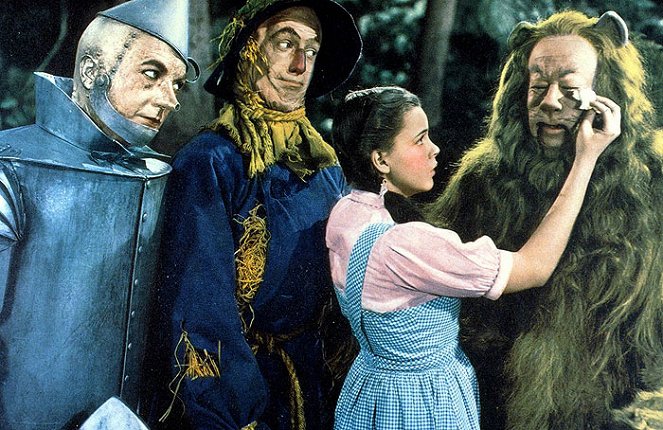
Postwar fantasy films and Ray Harryhausen
Certain fantasy elements were present in The Ghost and Mrs. Muir (1947), the story of a woman who shared a household with the ghost of a deceased ship captain who helped her write a book about his life, One Touch of Venus (1948), a comedy about a man who fell in love with a lifelike statue of the goddess of beauty, and Mr. Peabody and the Mermaid (1948), in which a married couple's holiday was disrupted by a fishing catch in the form of a mermaid. In the 1950s, the fantasy genre was enriched by films such as Harvey (1950), which told the story of a middle-aged man who befriends an invisible human-sized rabbit, a British adaptation of “A Christmas Carol” called Scrooge (1951), and The Story of Mankind (1957), a star-studded drama in which the members of a heavenly court recount the history of mankind as they contemplate its future.
The non-English-language films worth worth mentioning include the Russian fairytale-inspired fantasy films by Aleksandr Ptushko, The Magic Voyage of Sinbad (1952), The Sword and the Dragon (1956) and The Day the Earth Froze (1959), the Japanese Tales of Ugetsu by Kenji Mizoguchi (1953) and the Swedish The Seventh Seal by Ingmar Bergman (1957), which achieved international fame. In the late 1950s, Jean Cocteau also completed his trilogy on Orpheus, inspired by Greek legends, which began with The Blood of a Poet (1932), continued with Orpheus (1950) and culminated in the mystical parable The Testament of Orpheus or Don't Ask Me Why (1960).
The British-American adventure film The 7th Voyage of Sinbad (1958) was also inspired by Greek mythology, with special effects in charge artist and animator Ray Harryhausen, who worked on the characters of skeletons, dragon and cyclops. He first became famous for his participation in the production of several science fiction films and a documentary series about dinosaurs, which subsequently allowed him to delve into the world of fantasy. Besides the adaptation of Jonathan Swift's novel The 3 Worlds of Gulliver (1960), Jason and the Argonauts (1963) and Clash of the Titans (1981), based on ancient myths, the dinosaur films One Million Years B.C. (1966) and The Valley of Gwangi (1969) also stand out from his filmography. As for The 7th Voyage of Sinbad, Ray Harryhausen also worked on its sequels The Golden Voyage of Sinbad (1973) and Sinbad and the Eye of the Tiger (1977).
Jumalten taistelu (1981)
Kuva © Metro-Goldwyn-Mayer (MGM)
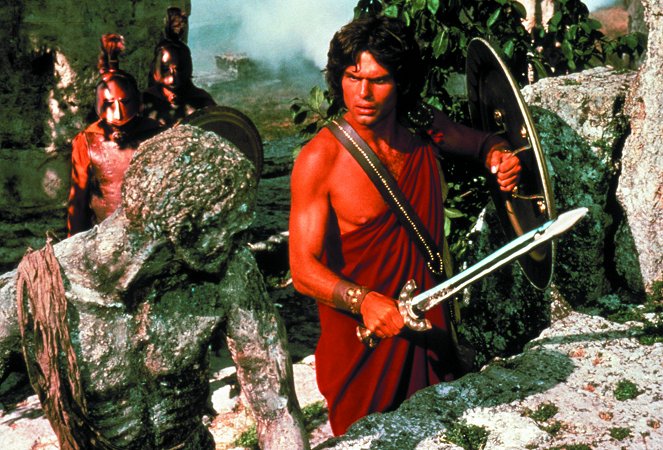
Star Wars, Conan the Barbarian and the birth of modern fantasy
In addition to the aforementioned films, the 1960s also saw the musical Mary Poppins (1964), which combined live action with two-dimensional animation and whose story revolved around the character of a magical nanny. The story of She was revived in a 1965 remake, which was followed in 1968 by a sequel, The Vengeance of She. The 1970s produced Willy Wonka & the Chocolate Factory (1971), about an excursion in a bizarre chocolate factory, and the dinosaur-inhabited The Land That Time Forgot (1975), in which the crew of a British cargo ship reaches a mysterious island surrounded by ice at the end of World War I. The epic Star Wars film series (from 1977) stood at the intersection of fantasy and sci-fi and became a huge phenomenon, whose incredible success gave rise to a vast franchise that includes not only a number of films, but also TV series, comics, novels, video games, board games, toys, collectible figures and other products.
The story of the legend of King Arthur was the subject of the comedy Monty Python and the Holy Grail (1975), while the same theme was later seriously treated in the historical fantasy film Excalibur (1981). In 1978, the comedy fantasy Heaven Can Wait, a remake of Here Comes Mr. Jordan, was also a success. John Milius's Conan the Barbarian (1982) was a revolution in the fantasy genre in its time, becoming a cult film that confirmed the audience's interest in more challenging adult fantasy films and made Arnold Schwarzenegger famous. It was later followed by the sequel Conan the Destroyer (1984) and also Red Sonja (1985). It was Conan the Barbarian, along with the aforementioned Clash of the Titans and Excalibur, that became the mainstay of modern fantasy films, inspired many other filmmakers and were subsequently followed in large numbers by later genre-related productions.
Conan - barbaren (1982)
Kuva © Universal Pictures

Other prominent fantasy films of the 1980s
In 1985, Ridley Scott made Legend, in which Jack, the hero, tried to prevent an evil demon from killing the last unicorn and marrying the princess, which would lead to the establishment of eternal night. Also in the 80s, director Terry Gilliam created a series of thought-provoking films with fantasy elements that stood out for their surrealistic execution. In Time Bandits (1981), a young boy joins a expedition of dwarves that travels through time in an attempt to rob various famous historical figures, in the dystopian Brazil (1985), a timid clerk in a totalitarian and bureaucratic world searches for the woman of his dreams, and The Adventures of Baron Munchausen (1988) dealt with the madcap adventures of the quirky titular Baron. Among European productions, the German The NeverEnding Story by Wolfgang Petersen (1984) was an international success.
Fantasy elements were also abundant in John Carpenter's Big Trouble in Little China (1986), which combined humour, action and martial arts with supernatural themes inspired by Chinese folklore. That film achieved cult status, as did Highlander, released the same year, which told the story of immortal chosen warriors settling scores across several centuries. In the 1980s, actor, filmmaker and puppeteer Jim Henson was also prominent with his films The Dark Crystal (1982), starring puppets, and Labyrinth (1986), in which the protagonist travels to the fairytale world of her favourite book to rescue her brother from the captivity of the Goblin King. Other fantasy films that focus on fairytale themes include Richard Donner's Ladyhawke (1985), Rob Reiner's The Princess Bride (1987) and Ron Howard's Willow (1988). Robert Zemeckis combined live actors with animation in Who Framed Roger Rabitt (1988), a comedy whose detective plot was set in our world, but intertwined with the world of famous Walt Disney and Warner Bros. animated characters, including Micky Mouse, Donald Duck and Bugs Bunny.
Den oändliga historien (1984)
Kuva © Warner Bros.
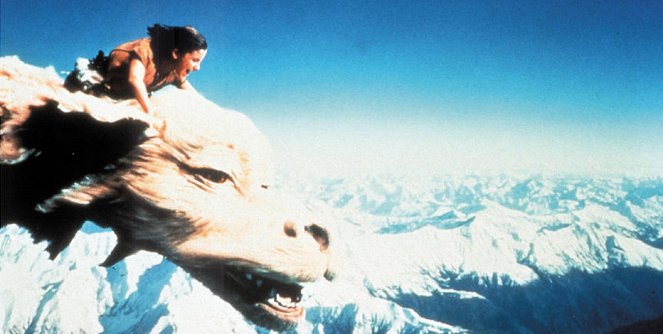
Fantasy in the 1990s and at the turn of the millennium
The early 1990s ushered in the fantasy genre with, among other things, Tim Burton's Edward Scissorhands (1990), about the fate of an unfinished invention, an artificial man who had scissors for hands. In Hook (1991), Steven Spielberg immersed himself in the world of Peter Pan, as did his main character, a lawyer who had to rescue his children from the clutches of an evil captain in the fairytale land of Neverland. In the fantasy comedy Groundhog Day (1993), an embittered reporter becomes the victim of a time loop. The fantasy genre included the comedy The Mask (1994) and the adventure film Jumanji (1995), named after a mischievous board game that in its day had revolutionary digital effects. Aspects of medieval fairytale fantasy featured in Dragonheart (1996), in which a dragon donated half his heart to save a young wounded prince. Egyptian mythology and a famous monster from the history of horror were revived by the adventure film The Mummy (1999) and its two sequels.
Certain fantasy or supernatural themes were also present in the 1990s films Ghost (1990), Death Becomes Her (1992), The Flinstones (1994), Casper (1995), The Borrowers (1997), Meet Joe Black (1998), Pleasantville (1998), What Dreams May Come (1998), Asterix and Obelix vs. Caesar (1999), and The Green Mile (1999), among others. Among the films made shortly after the arrival of the new millennium, the Chinese Crouching Tiger, Hidden Dragon (2000) stood out in the fantasy genre, introducing the wuxia genre to the Western world, and was followed by Hero (2002), House of Flying Daggers (2004) and Curse of the Golden Flower (2006). Ron Howard's Christmas-themed How the Grinch Stole Christmas (2000), Tim Burton's Big Fish (2003), and the Pirates of the Caribbean franchise (since 2003), which succeeded in reviving the long-dead genre of pirate films, were also notable.
Saxhand Edward (1990)
Kuva © 20th Century Fox
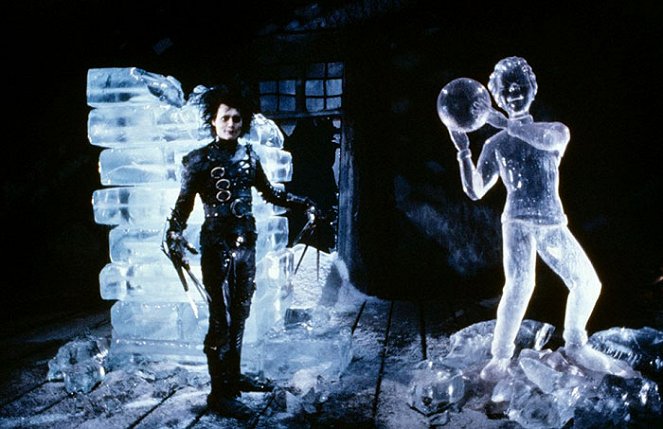
Animated fantasy films
After the success of Snow White and the Seven Dwarfs (1937), Disney focused on fairytale themes, resulting in Pinocchio (1940), Dumbo (1941), Alice in Wonderland (1951), Peter Pan (1953), and Aladdin (1992). Other Disney princess films that stand out include Cinderella (1950), Sleeping Beauty (1959), The Little Mermaid (1989), Beauty and the Beast (1991), Pocahontas (1995), Mulan (1998), The Princess and the Frog (2009), Tangled (2010), Frozen (2013), and Moana (2016). Disney made also films that can be considered pure fantasy such as The Sword in the Stone (1963), The Black Cauldron (1985) and Hercules (1997). In addition, many Disney animated films were classified as fables because they featured personified animals.
Other studios specialising in animated films did not slack off. Fantasy elements abounded in films from Pixar (Monsters, Inc. from 2001, Brave from 2012, Coco from 2017) and Dreamworks (the Shrek series from 2001 and the How to Train Your Dragon series from 2010). Robert Zemeckis also experimented with the animated fantasy films The Polar Express (2004), Beowulf (2007) and A Christmas Carol (2009). Among the older animated fantasy films, The Last Unicorn (1982), Ralph Bakshi's Wizards (1977), his animated adaptation of The Lord of the Rings (1978), and the dark tale Fire and Ice (1983), are worthy of attention. The Japanese studio Ghibli is also famous for its animated fantasy films such as the internationally successful Nausicaä of the Valley of the Wind (1984), My Neighbor Totoro (1988), Princess Mononoke (1997), Spirited Away (2001) and Howl's Moving Castle (2004). The Irish animated fantasy films The Secret of Kells (2009), Song of the Sea (2014) and Wolfwalkers (2020), all inspired by Irish and Celtic mythology, were also internationally successful.
Fire and Ice (1983)
Kuva © Twentieth Century-Fox Film Corporation
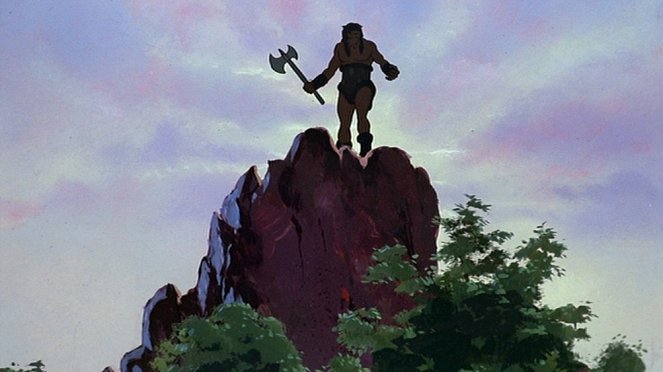
The European tradition of fairytale fantasy films
In Europe, the fantasy genre was associated more with fairytales and folklore than with epic myths and legends, which was also due to the tradition of European fairytale writers like the Brothers Grimm from Germany, Hans Christian Andersen from Denmark, Charles Perrault from France, Carlo Collodi from Italy and the Czech Božena Němcová. Films based on this tradition worked with fictional fairytale creatures (often angels and devils, dragons, water sprites, dwarves, or witches and warlocks), supernatural elements, and archetypal tales of the battle between good and evil, but unlike fantasy, they were more general, simpler, and free of time and location, as well as mythological and historical context.
These films are often set in an unspecified kingdom beyond the nine mountains and nine rivers, where kings and queens rule and they have princes and princesses. Another common character is a poor hero/heroine from the common people, and the usual motive is to break a curse or an evil spell, or to find a magical artefact. Czechoslovakia had a relatively long tradition in this respect, but until the late 1980s, like most of Central and Eastern Europe, Anglo-Saxon culture and the fantasy genre did not penetrate to the same extent as the rest of the Western world. As such, Czechoslovak films such as The Proud Princess (1952), Once Upon a Time, There Was a King... (1955), Three Wishes for Cinderella (1973) and Give the Devil His Due (1985) were set in fairy-tale kingdoms, while films like The Incredibly Sad Princess (1968) and The Girl on the Broomstick (1972) were conceived as fairytale comedies.
Among Soviet fairytale films, Frosty (1964), The Black Wizard's Gift (1978) and The Story of the Voyages (1982) were of note. After the collapse of Czechoslovakia, the Czech Republic in particular continued its fairytale filmmaking tradition with films such as The Immortal Aunt (1993), Angel of the Lord (2005), The Seven Ravens (2015) and Princess Cursed in Time (2020). In Russia, films such as The Dragon (2015) and The Last Knight (2017) transformed classic fairytales into more modern forms reminiscent of contemporary fantasy production, while Night Watch (2004), Day Watch (2006), and The Wolfhound (2006) stood out among modern fantasy.
S čerty nejsou žerty (1984)
Kuva © Filmové studio Barrandov
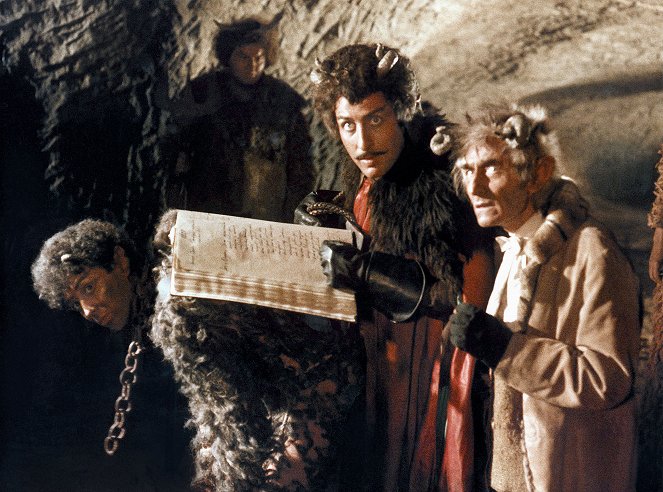
The Lord of the Rings, Harry Potter and a new era of fantasy films
In terms of world cinema, for decades relatively few fantasy films were made compared to other genres, due, among other things, to high costs and the laborious production of special effects, not to mention other aspects that gave the genre a bad reputation, such as shoddy craftsmanship, overacting, and the decadence of some of its themes. The turn of the millennium was a revolution in this respect, when the huge development of digital technology and computer effects made it possible to realise any vision of fantastic worlds much more believably and with less effort. The incredible success of two franchises shortly after 2000, Peter Jackson's The Lord of the Rings trilogy (2001-2003) and the eight-part Harry Potter saga (2001-2011), led to a meteoric rise in the popularity of fantasy films and a de facto new era for the genre.
Both franchises became literal social phenomena that were not only hugely profitable, but even developed large fan bases full of loyal admirers and die-hard followers, much like Star Wars had done and still does today. The Lord of the Rings, which was an ambitious, serious and epic adaptation of Tolkien's genre classic, was the first fantasy film in history to win the Academy Award for Best Picture, significantly elevating the reputation of the genre, which was now taken more seriously than ever before. Specifically, the third instalment, The Lord of the Rings: The Return of the King (2003), won a total of eleven Oscars, standing alongside the record holders Ben-Hur (1959) and Titanic (1997), which managed to win the same number of statuettes in their time.
The equally massively popular Harry Potter franchise, an adaptation of J.K. Rowling's book saga about the adventures of a young wizard and his classmates from the School of Witchcraft and Wizardry, in turn brought a large number of children and teenage viewers to the genre and resulted in the birth of many other fantasy films with teenage heroes. Both franchises were followed years later by other films: The Lord of the Rings trilogy, by The Hobbit, again written by J.R.R. Tolkien and directed by Peter Jackson (from 2012-2014), and the Harry Potter series, by Fantastic Beasts (from 2016), directed by David Yates, who had also directed the last four instalments of the Potter saga.
Taru sormusten herrasta - Sormuksen ritarit (2001)
Kuva © 2001 New Line Cinema

The post-2000 fantasy boom
The success of The Lord of the Rings and Harry Potter was naturally followed by a host of other fantasy films, many of which were also adaptations of novels. For the most part, Hollywood producers did not hesitate to attach big budgets to these emerging promises of the next big hit and to lavish them with tons of digital effects. This is how the adaptations of the first three books of the fantasy saga The Chronicles of Narnia by C.S. Lewis (from 2005-2010) were created, translating Christian myth into a form understandable to children with the stories of four teenage siblings visiting the fairytale land of Narnia. Other examples are Eragon (2006), about the fate of a young dragon rider, and The Golden Compass (2007), whose heroes have animal companions representing their souls. The fairytale Stardust (2007), an adaptation of Neil Gaiman's novel about a man who falls in love with a female fallen star while a battle for a royal throne rages in the background, also drew considerable acclaim.
Among fantasy films aimed at adult audiences, one cannot fail to mention Guillermo del Toro's Pan's Labyrinth (2006), in which a fairytale world intertwined with the horrors of war in Franco’s Spain. The same director also visited the world of fantasy in Hellboy (2004) and Hellboy II: The Golden Army (2008), followed by Crimson Peak (2015) and the Oscar-winning The Shape of Water (2017), an unconventional romance between a mute cleaning lady and an amphibious creature. Terry Gilliam let his imagination speak in both The Brothers Grimm (2005), inspired by German fairytales, and The Imaginarium of Doctor Parnassus (2009), while Tarsem Singh worked directly with the motif of storytelling in The Fall (2006). Fantasy films suitable for young people include Peter Pan (2003), Bridge to Terabithia (2007), The Spiderwick Chronicles (2008), City of Ember (2008) and The Nutcracker and the Four Realms (2018).
Other famous books that have been adapted into fantasy include Winter's Tale (2014), The BFG (2016) and Miss Peregrine's home for Peculiar Children (2016). The musical Into the Woods (2014) was inspired by classic fairytales, the world of Warcraft (2016) was based on the popular computer game, and King Arthur: Legend of the Sword (2017) played with Arthurian legends. Some comic book superhero films also fall into the fantasy genre, for example, Wonder Woman (2017), Aquaman (2018), and the Norse mythology-inspired Thor franchise (since 2011). The comedy Your Highness (2011) is an example of one of the few film parodies of the fantasy genre.
Hellboy (2004)
Kuva © 2004 Revolution Studios
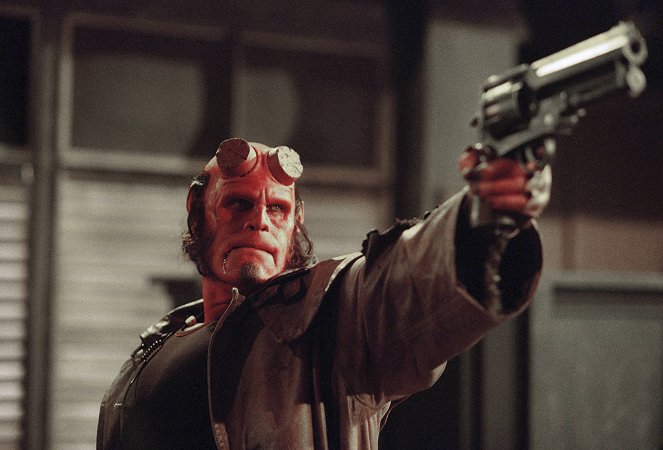
Remakes and Young Adult Fantasy
James Cameron's long-gestating Avatar (2009), about a clash between humans and native aliens on the moon Pandora, was a massive success, revolutionising digital effects and the use of 3D technology, which was becoming popular again for the first time since the 1950s. After the success of a new version of Alice in Wonderland (2010) and Maleficent (2014), which told the story of Sleeping Beauty from the point of view of the main villain, Disney decided to release more remakes of their own fairytale and fantasy films, which resulted in Cinderella (2015) and Beauty and the Beast (2017), followed by Dumbo (2019) and Aladdin (2019). The motif of the Snow White fairytale was the basis of Mirror Mirror (2012) and Snow White and the Huntsman (2012).
After many years, The Wizard of Oz (Oz: The Great and Powerful, 2013) and Mary Poppins (Mary Poppins Returns, 2018) received sequels. Clash of the Titans (2010) and Conan the Barbarian (2011) were remade in a modern way, but failed with audiences and critics; the new live-action versions of Peter Pan (Pan, 2015) and Hercules (2014) were also unsuccessful; and John Carter (2012), based on the novel by Edgar Rice Burroughs, the creator of Tarzan, was a big flop.
Of the fantasy films aimed primarily at teenage audiences, whose protagonists were often adolescents gifted with supernatural abilities, by far the most successful was the Twilight saga (2008-2012), which benefited not only from the popularity of the books it was based on, but also from the romantic plot between a human student and her handsome vampire classmate. After the success of this saga, fantasy and science fiction books and films collectively known as "young adult fiction" burst into the genre with, for instance, a pair of films inspired by Greek mythology, Percy Jackson & The Olympians: The Lightning Thief (2010) and Percy Jackson: Sea of Monsters (2013). That same wave brought Beautiful Creatures (2013) and The Mortal Instruments: City of Bones (2013), as well as the much more serious romantic film Every Day (2018), about a being who wakes up in a different body every day.
Twilight - Houkutus (2008)
Kuva © Summit Entertainment
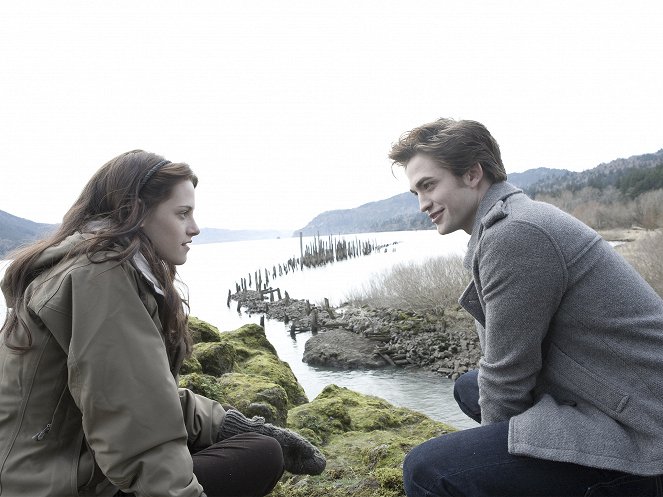
TV fantasy series
Like films, many series contain some fantasy elements, but they may not all be classified as representatives of the genre. For example, American anthology series such as The Twilight Zone (1959-1964 and 1985-1989) or Night Gallery (1969-1973) contained themes belonging to fantasy, but also horror, science fiction, detective, mystery and thriller. The fantasy sitcom I Dream of Jeannie (1965-1970) combined humour with a plot about an astronaut who found a magic lamp in the desert and rescued a genie from it. Also popular was the fantasy sitcom Bewitched (1964-1972), about a witch who married an ordinary man and lived with him in a typical small-town suburb. The series Dark Shadows (1966-1971) did work with the fantasy genre, but it was dominated by horror themes. There are also a lot of animated fantasy series, for example Avatar: The Last Airbender (2005-2008) from the US, and Naruto (2002-2007) and Pokémon (since 1997) from Japan.
The 1990s ushered in an era when the development of digital effects gave rise to a number of fantasy adventure series inspired by stories of legendary warriors and mythological heroes. The most famous were Hercules: The Legendary Journeys (1995-1999) and Xena: Warrior Princess (1995-2001), but the Canadian The Adventures of Sinbad (1996-1998) also had many fans. The horror fantasy series Buffy the Vampire Slayer (1997-2003) came up with a vampire theme, while the witchcraft theme was revived by Sabrina, the Teenage Witch (1996-2003) and Charmed (1998-2006). Among the more recent series, Heroes (2006-2010), Once Upon a Time (2011-2018) and the British Merlin (2008-2012) have been very successful. The most significant milestone in fantasy television, however, was the highly successful Game of Thrones (2011-2019), based on the book saga of the same name by author George R.R. Martin. Over its eight seasons, it became a cultural phenomenon and gained a huge fan base around the world. Other highly popular fantasy series include Stranger Things (since 2016), His Dark Materials (since 2019) and The Witcher (since 2019), based on a book by Polish writer Andrzej Sapkowski.
Filmmaniak
Parhaat fantasiaelokuvat
Taru sormusten herrasta - Sormuksen ritarit (2001) |
Taru sormusten herrasta - Kuninkaan paluu (2003) |
Jakten på den försvunna skatten (1981) |
Indiana Jones och det sista korståget (1989) |
Rymdimperiet slår tillbaka (1980) |
Taru sormusten herrasta - Kaksi tornia (2002) |
Stjärnornas krig (1977) |
Star Wars: Episodi III - Sithin kosto (2005) |
Coco (2017) |
Jedis återkomst (1983) |
| Kaikki parhaat fantasiaelokuvat |







